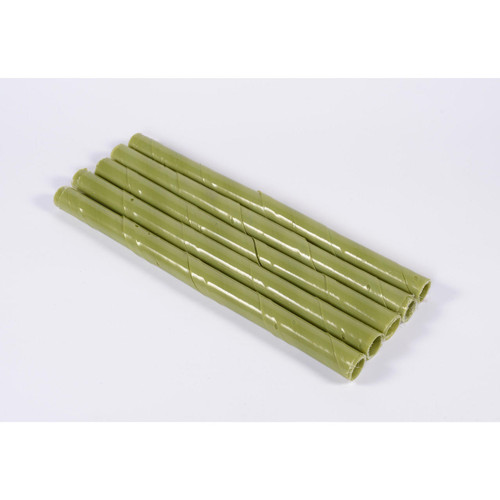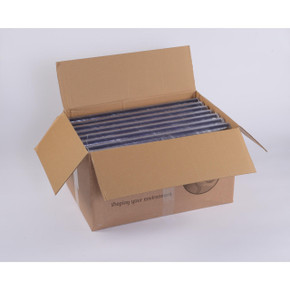The 20cm Bio Spiral Vole Hedge Tree Guard is an eco-friendly, cost-effective solution for protecting young trees, hedges, and saplings from damage caused by mice and voles. Designed for farmers, landowners, forestry professionals, and commercial planting schemes, this lightweight and flexible spiral guard provides a strong physical barrier while allowing trees to grow naturally.
Constructed from fully biodegradable materials, the Bio Spiral Vole Guard offers an environmentally responsible alternative to traditional plastic guards. Its compact spiral design expands with the tree, preventing restriction while safeguarding newly planted whips, small trees, and hedgerows from pest damage.
The guard’s material has been independently tested and certified as fully compostable with DIN CERTO and ASTM D6400 standards. Initial breakdown occurs through UV exposure, moisture, and photo degradation over approximately 4–5 years, after which the guard biodegrades into carbon dioxide, water, and humus, enriching the soil without leaving harmful residues.
Ideal for hedgerow establishment, woodland creation, and commercial or grant-funded planting projects, the 20cm Bio Spiral Vole Hedge Tree Guard combines effective small mammal protection with sustainability for modern planting schemes.
Key Features & Benefits
-
Protects against voles and mice – Reduces damage to young trees and hedges during establishment.
-
Grows with the tree – Spiral design expands naturally, preventing restriction.
-
Eco-friendly biodegradable material – Fully compostable, certified by DIN CERTO and ASTM D6400.
-
Lightweight & easy to handle – Quick installation for large-scale or small planting schemes.
-
Cost-effective solution – Protects small whips and saplings without the expense of larger guards.
-
Soil-enriching end-of-life – Breaks down into carbon dioxide, water, and humus, adding nutrients to the soil.
Size Available
Areas of Use
-
Hedgerow and small tree planting in farmland and estates
-
Woodland establishment and commercial forestry projects
-
Grant-funded or environmental planting schemes
-
Sites affected by vole and mouse browsing
-
Urban green space and landscaping projects requiring biodegradable protection
Technical Specification
Material | Fully biodegradable polylactic acid (PLA)
Height | 20cm
Diameter | 38mm
Colour | Natural light brown
Lifespan | Approx. 4–5 years before full UV breakdown begins
Protection Level | Mice, voles, and small pests
Installation | Spiral twists around plant; expands as plant grows
Packaging | Sold in boxes of 400











